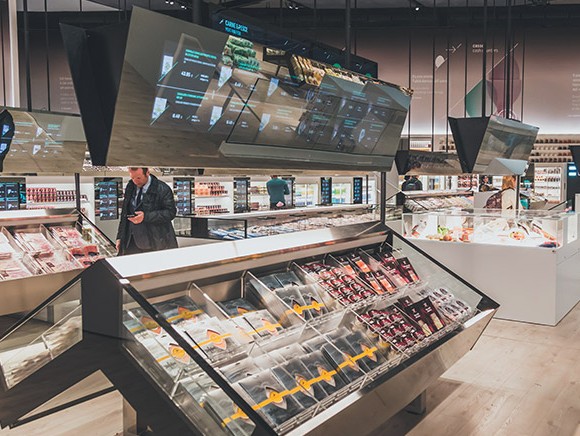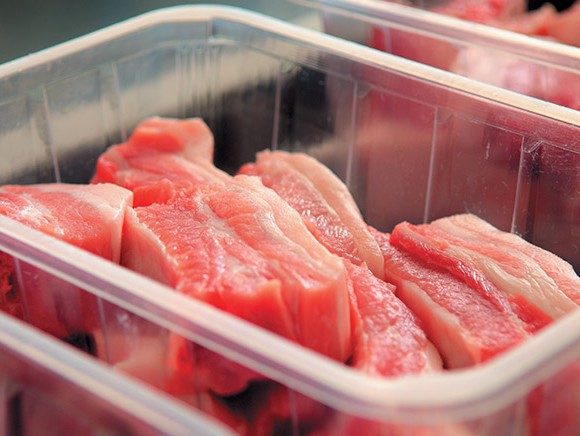
Global market research firm Mintel has identified six packaging trends for 2016: digital printing, transparency (both in information and literally), new levels of quality of films and foils, sustainability, customisation and apps. Here, we’ve asked around within the packaging industry: what evidence of this are professionals seeing in their everyday work?
Reusable packaging is often more sustainable because it minimises the use of natural resources but it also creates specific challenges. Bob Lemmen is marketing manager at Lantech, supplier of case erectors and pallet wrappers. He sees the efforts to improve sustainability resulting in thinner and more fragile PET bottles and boxes. Therefore, his machines must be able to cope with less sturdy material and the film used must provide extra stability: it has to protect the products and firmly secure them to the pallet. “We use a special technique for that which turns part of the film into a kind of strong rope. Annually, 1% of all shipments are written off due to damage. That amounts to billions of euros and a huge amount of food and drink is wasted, so there are considerable gains to be made.”
In our February edition Caroli Buitenhuis, Chain Manager of Bioplastics and Biobased Packaging at Innovatielink, called bioplastics a good decision: “They will speed up the shift to sustainable packaging.” Jan Wessemius, Product Manager Specialties at Oerlemans Plastics, wholeheartedly agrees. He describes the use of Braskem’s new I’m Green PE for the production of film as a breakthrough. The film from this Brazilian biopolymer producer’s ‘low-fossil’ polyethylene made from sugarcane, he says, “cannot be told apart from traditional films made from fossil-sourced raw materials yet it is 100% recyclable.” Oerlemans Plastics uses I’m Green PE to produce printed and perforated films and packaging materials. “The quality of this biobased film is completely identical to that of regular films. The only way to determine which ingredients have been used to make the films – biobased or fossil – is to use the C14 method in the lab.” According to Wessemius the new film, which they are launching on the European market in collaboration with the German firm FKuR Kunststoff, will grow the revenue share of biobased film, which currently accounts for just 1% of the 65,000 tons produced by Oerlemans Plastics each year. In addition to the development of new raw materials, further innovations also contribute to sustainability, continues Wessemius, who gives the “Brammetje Bammetje” project as a good example. This is a bag Oerlemans Plastics has developed together with Dutch packaging firm Beko Verpakkingen for a quarter of a loaf of bread. It reduces the amount of stale bread thrown away by 10%: functional packaging leading to less food waste. In other words, this also contributes to improved sustainability within the food chain.
Labelling company Etiket Nederland based in Alkmaar sees the market developments causing a rapidly changing food packaging landscape. “But we are keeping pace with those changes,” says Commercial Director Dave Geurts. The firm merged with Vila Etiketten in January 2015 and with Speciaaldrukkerij Max Aarts in January 2016. The total group generates sales of 40 million euros and has 160 employees. Geurts: “Label printing alone is no longer enough, and the belly band and sleeve are becoming ever-more important. Whereas labels used to be chiefly used to provide information about a product’s ingredients, our products are increasingly playing a role in the marketing aspect, and that is reflected in our contacts too. In the past we used to deal with purchasers but now we are increasingly talking to our customers’ marketing departments.” Another change is smaller-sized orders. Regular variation is important in ready meals, for example, and the product offering – and hence the packaging – is being continually updated. The changes in the market also demand a new approach from the account managers at Etiket Nederland. Whereas they were previously focused on closing a deal for as many labels as possible, they now strive to help each client to think about the positioning of their products in the retail channel. Geurts expects the industry consolidation to continue and the new packaging group itself remains on the acquisition trail.
Stephen van Uhm heads up the company Van Uhm, a supplier of machines food processing equipment including thermoforming machines and fully automatic tray sealing machines. One of the trends in his opinion is the rise of skin packaging which entails the use of a micro-perforated film to package fresh products such as meat. “Skin packaging gives a product on-shelf appeal and consumers buy with their eyes. It’s currently used primarily for premium products such as dry-aged meat.” Another trend he comes across in practice is the growth of small pack sizes as more and more fresh products are packaged as individual portions. Van Uhm is participating in a trial with biobased packaging material: “Sustainability has actually been an important topic for many years.”
Hans den Dikken is Communication Manager at Bandall Benelux, a manufacturer of bundling and belly band systems with a global network of dealers. The company has been able to supply 100%-environmentally friendly belly bands for some time, but demand for them remains relatively low so far. “The belly band itself is rapidly gaining ground,” says Den Dikken, “and in most cases they are already more sustainable than many other packaging methods such as shrink wrap or sleeve packaging. That’s partly because the belly band material is so thin, and also because little material is required to achieve maximum visual impact.” Whether for salads, fruit salads, meat, fish or bakery products, shoppers can see past (or even through) a belly band so it keeps the freshness visible. Furthermore, the belly band offers plenty of space for nutrition information and branding and is perfect for eye-catching promotional packs or shelf-ready packaging.
The company Hevel Vacuüm in Zaandam supplies vacuum bags and flexible films for all manner of fresh products. According to Coos Velstra, Director, customers are increasingly making a conscious decision for certified quality. “The industry and the trade are including quality in their buying decisions once more. Purchasers understand the importance of food safety and know the real cost of a product recall.” He hopes that this development signals the end of the downward spiral of the battle to compete on price, such as currently among butchers in the foodservice sector. He does not understand why companies choose to skimp on packaging. “If a butcher uses the very best ingredients to produce high-quality sausages based on the best casings, the best herbs and spices and the utmost craftsmanship, and then stuffs it in a cheap vacuum bag, I can’t help but ask myself: why bother?!”

Re-sealable packaging and fixed-weight packs – those are two clear trends according to Eric Kooy, Sales Industry at Bizerba. The firm supplies weighing and slicing technology and labelling and detection systems. For cooked meats and cheese products, re-sealable packaging concepts are generally based on an envelope design. Fixed-weight packs are becoming the norm for many products. “It is easier for manufacturers and wholesalers plus retailers avoid chaos on the shelves caused by shoppers searching for packs containing more or less product.” Furthermore, Kooy expects to see growth in the use of advanced vision systems and camera technology to detect contamination in packaged products. “That is already in full swing in the UK due to the risk of sky-high fines. I expect things to go the same way in western Europe.” He also predicts that packaging will play an even stronger role in meeting consumers’ needs for information, and to illustrate his point he mentions GS1 Germany’s fTtrace concept. Based on an app and a QR code displayed on the packaging, this enables consumers to trace products per batch and to see what the manufacturer has done to safeguard quality. “That definitely adds value to labels,” he states.
‘Sustainability has actually been an important topic for many years’
Source: ©Foto winkel: Stefano Tinti / Shutterstock.com; ©Foto vleesbakjes: Rtem/Shutterstock.com